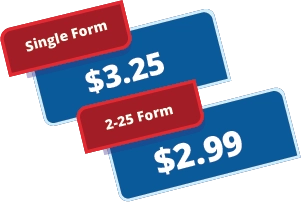E-file Form 1099-DIV Online with Tax2efile
Streamline your 1099-DIV Form online with Tax2efile. With our reliable and efficient system, we ensure that your submission to the IRS is accurate and send you the filing copies quickly. By leveraging our hassle-free platform save time and effort, and complete your filings securely. Register and join now with countless satisfied users who have successfully filed their 1099-DIV Forms.

What is a Form 1099-DIV?
The 1099-DIV Form is used to report dividends and other distributions to taxpayers and the IRS. The taxpayer might receive a 1099 DIV tax form from their brokerage firm because they earned dividends on their investments, in this case, the taxpayer will File IRS Form 1099-DIV for the Tax year. There are some exemptions too when you file Form 1099-DIV. If you do not receive the 1099-DIV form by mail on time and do not see it when you sign into your account, contact your investment brokerage. Dividends and distributions are sent to investors who receive distributions of all types of investments in a calendar year.
Types of Income Reported on Form 1099-DIV
Form 1099-DIV categorizes income into the following main sections:
| Types | Purpose |
|---|---|
| Ordinary Dividends | Dividends are the regular payments made by a company to its shareholders. These dividends are subject to the standard income tax rates. |
| Qualified Dividends | Dividends that meet the criteria for being taxed at lower long-term capital gains tax rates. |
| Capital Gains Distributions | Profits made from the sale of mutual funds or stocks that are distributed to shareholders. |
| Non-Dividend Distributions | Distributions that are non-taxable such as return of capital or other non-dividend distributions. |
| Foreign Tax Paid | Dividends from foreign investments and taxes that are withheld overseas. |
How to File Form 1099-DIV?
Banks, investment firms, and other financial institutions must provide taxpayers with a 1099-DIV Form by January 31st each year. The form must include the name, address, and social security number of the taxpayer and will include the taxpayer’s information taxpayer. The taxpayer does not need to file 1099-DIV with their taxes, but they need to report the information on it with their return. If the taxpayer does not receive the 1099-DIV form, the user is required to report the income to the IRS qualified dividends are the major exception. Qualified dividends meet certain criteria that allow them to be taxed at a lower capital gains tax rate.
The taxpayer can always find the pay-out amount by logging in to their investment account. If the user’s dividend or interest income is less than $1,500, the taxpayer can report it directly on Form 1040. If the taxpayer’s distributions exceed $1,500, the taxpayer may need to report it on a Schedule B attachment.
Who Must File 1099-DIV Form?
File Form 1099-DIV for each person:
- To Whom you paid dividends (including dividends on capital gains and dividends on exempt interest) and other distributions valued at $10 or more in money or other property.
- For whom you have withheld and paid any foreign tax on dividends and other distributions on the stock.
- For whom you have withheld federal income tax on dividends under the withholding tax rules, or
- To whom you paid $600 or more in cash or other property as a result of a liquidation.


Watch our step-by-step video on How to E-File IRS Form 1099-DIV with Tax2efile
When is the Deadline to File Form 1099-DIV?
| Filing Type | Deadline |
|---|---|
| Recipient copy | January 31st |
| IRS Paper Filing | February 28th |
| IRS Electronic Filing | March 31st |
Note:If the due date/deadline falls on a Saturday, Sunday, or federal holiday, the filer will need to E-file 1099 on the next business day.
Get Started by Registering with Tax2efile Today!
Our IRS-approved e-fling services make tax season stress-free. Sign up Today!

Frequently Ask Questions
Find answers to commonly asked questions about our products and services.
Still have questions?
If you have more questions, please refer to our FAQ page. Contact our customer support team for assistance.





